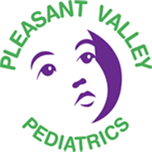Using Liquid Medicines
Many children's medicines come in liquid form. Liquid medicines are easier to swallow than pills. But they must be used the right way.
Types of Liquid Medicines
There are 2 types of liquid medicines:
-
Medicines you can buy without a doctor's prescription (called over-the-counter or OTC)
-
Medicines a doctor prescribes
OTC Medicines
All OTC medicines have the same kind of label. The label gives important information about the medicine. It says what it is for, how to use it, what is in it, and what to watch out for. Look on the box or bottle, where it says "Drug Facts."
Check the chart on the label to see how much medicine to give. If you know your child's weight, use that first. If not, go by age. Check the label to make sure it is safe for infants and toddlers younger than 6 years. If you are not sure, ask your child's doctor.
Prescription Liquid Medicines
Your child's doctor may prescribe a liquid medicine. These medicines will have a different label than OTC medicines. Always read the label before you give the medicine to your child. It is also important to always use the dosing device that comes with the medicine or that your doctor or pharmacist tells you to use.
With OTC or prescription medicines, be sure to call your child's doctor or pharmacist
-
How much medicine to give.
-
How often to give it.
-
How long to give it.
A Word About Infant Drops
Infant drops are stronger than syrup for toddlers. Parents may make the mistake of giving higher doses of infant drops to a toddler, thinking the drops are not as strong. Be sure the medicine you give your child is right for his or her weight and age.
How to Give Liquid Medicines
Follow the directions exactly. Some parents give their children too much medicine. This will not help them get better faster. And it can be very dangerous, especially if you give too much for several days. Always read the label carefully.
How to Measure Liquid Medicines
Use the dropper, syringe (sir-INJ), medicine cup, or dosing spoon that comes with the medicine. If the medicine does not come with a dosing device, ask your doctor or pharmacist for one that should be used. Never use teaspoons, tablespoons, or other household spoons to measure medicine.
Medicine can be measured in different ways. You may see teaspoon (tsp), tablespoon (tbsp or TBSP), or milliliters (mL, ml, or mLs) on the dosing device.
Tips
1 teaspoon (tsp) = 5 milliliters (mL)
3 teaspoons (tsp) = 1 tablespoon (tbsp)
1 tablespoon (tbsp) = 15 milliliters (mL)
Medicine Cups
1 tbsp is the same as 15 mL.
Be sure to use the cup that comes with the medicine. These often come over the lids of liquid cold and flu medicines. Don't mix and match cups to different products. You might end up giving the wrong amount.
Dosing Spoons
Fill the dosing spoon while holding it upright.
These work well for older children who can "drink" from the spoon. Use only the spoon that comes with the medicine. Be sure to use the lines and numbers to get the right amount for
Droppers or Syringes
In this example, a dropperful is the same as 0.8 mL.
1 tsp is the same as 5 mL.
Word to Know
pharmacist (FARM-uh-sist)—a person who has special training to fill prescriptions and teach people about their medicines.
Adapted from
To learn more, visitwww.aap.orgorwww.HealthyChildren.org.
Your child's doctor will tell you to do what's best for your child.
This information should not take the place of talking with your child's doctor.
Copyright © 2008 American Academy of Pediatrics, Updated 03/2015 All rights reserved. AAP Feed run on: 10/29/2025 Article information last modified on: 4/3/2025

